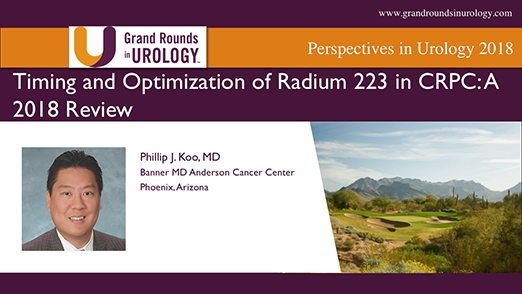Biomarkers and Clinical Decisions – Integrating with Clinical Parameters, Imaging & Prognostic Instruments
Matthew R. Cooperberg, MD, MPH, Professor of Urology and Epidemiology & Biostatistics and Helen Diller Family Chair in Urology at the University of California, San Francisco (UCSF), outlines the current role of biomarkers in clinical decision-making for prostate cancer. In the first part of the presentation, he discusses markers for pre-diagnosis evaluation, noting that candidate markers have to improve on an existing multivariable gold standard, have to identify potentially lethal prostate cancer, and should be held to the same standard as other biomarkers. Dr. Cooperberg goes over the tests that are currently available, and considers where markers belong in the testing sequence. He observes that liquid markers have better negative predictive value for high-grade cancer than MRI does, and also emphasizes the continued importance of systematic biopsy. He then explains the emerging UCSF diagnostic sequencing approach, in which patients with an elevated marker receive a biopsy regardless of MRI results. In the next part of the presentation, Dr. Cooperberg looks at the relatively stagnant state of post-diagnosis markers. According to him, risk groups are outdated and need to be replaced. He then summarizes the 2nd San Francisco Consensus Statement on this matter, which says that a putative biomarker must be shown to improve on an existing, validated, multivariable model reflecting all available clinical information, and explains that while some biomarkers meet this criteria, they are not yet standard of care. Dr. Cooperberg concludes that the liberal use of secondary tests to aid decision-making before and after biopsy helps drive balance of risks and harms in favor of early baseline PSA screening with low initial threshold, that MRI can help target biopsy and stage cancer but does not replace need for initial systematic biopsy, and that no test is binary.
Read More


